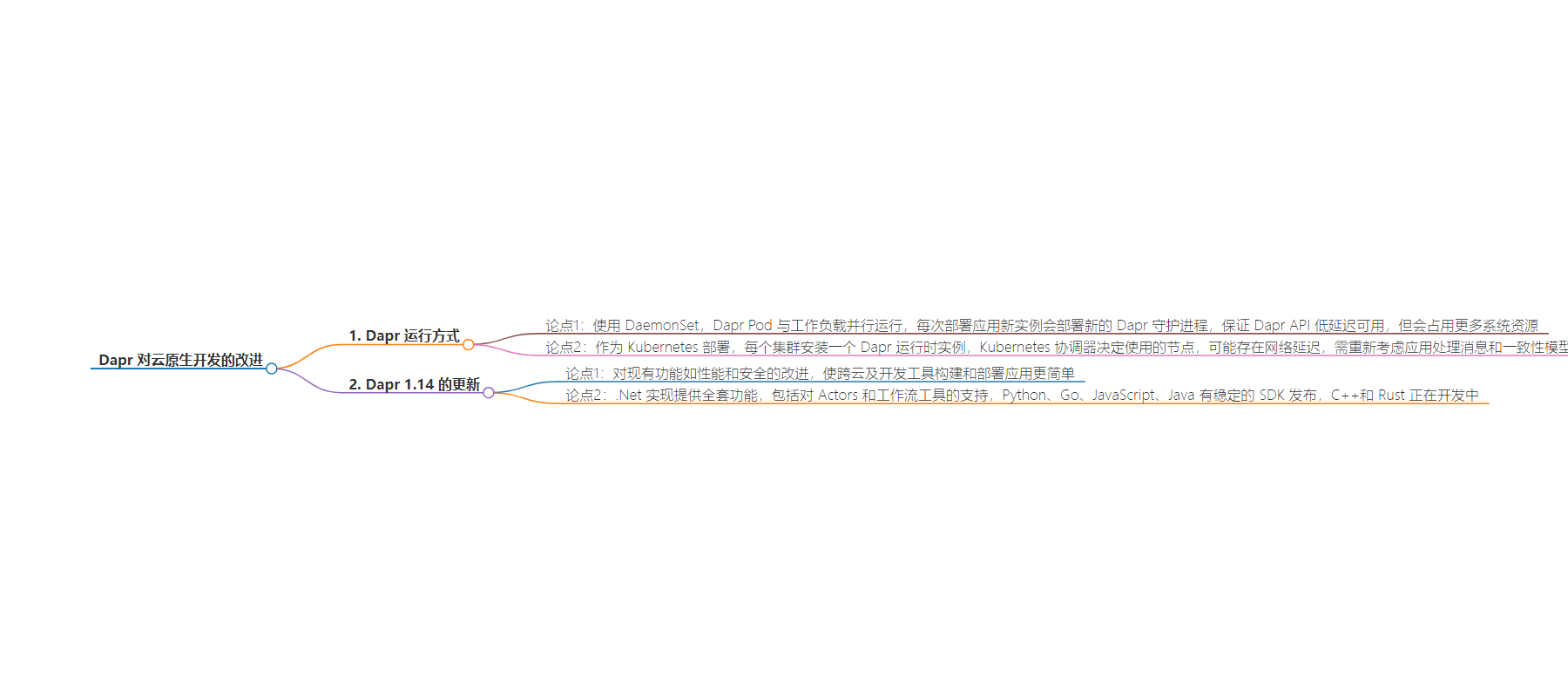包阅导读总结
1. 关键词:Dapr、Cloud-Native、Development、Kubernetes、Updates
2. 总结:
– 介绍了 Dapr 改善云原生开发的方式。
– 提及使用 DaemonSet 运行 Dapr 存在资源消耗问题,也可选择作为 Kubernetes 部署但有网络延迟。
– 指出 Dapr 1.14 主要是对现有功能的改进,多种 SDK 可供选择。
3. 主要内容:
– Dapr 改善云原生开发
– 使用 DaemonSet,Dapr Pod 与工作负载并行运行,能保证低延迟但消耗更多资源。
– 资源有限时可作为 Kubernetes 部署,存在网络延迟,需重新考虑应用处理消息和一致性模型。
– Dapr 1.14 的更新
– 对现有功能如性能和安全的改进。
-.Net 实现功能齐全,其他语言如 Python、Go、JavaScript、Java 有稳定 SDK 发布,C++和 Rust 正在开发。
思维导图:
文章地址:https://www.infoworld.com/article/3479882/dapr-1-14-is-almost-ready-to-graduate.html
文章来源:infoworld.com
作者:InfoWorld
发布时间:2024/8/1 9:00
语言:英文
总字数:1360字
预计阅读时间:6分钟
评分:89分
标签:Dapr,云原生开发,Kubernetes,分布式系统,微服务
以下为原文内容
本内容来源于用户推荐转载,旨在分享知识与观点,如有侵权请联系删除 联系邮箱 media@ilingban.com
Using a daemonset, a Dapr pod runs alongside your workloads. Each time the Kubernetes scheduler deploys a new instance of your application, it’ll deploy a new Dapr daemon, so that the Dapr APIs are always available with minimum latency. There is, of course, a downside, in that this approach takes more system resources than using a sidecar.
If resources are an issue, you can use Dapr as a Kubernetes deployment, installing one instance of the Dapr runtime per cluster. The Kubernetes orchestrator will determine which node it uses for Dapr, so there can be network latencies between workloads and APIs. You may need to rethink how your application handles messages and what consistency model you use.
Most of the updates in Dapr 1.14 are improvements to existing features, such as performance and security, which, together with the larger changes, should make it easier to build and deploy Dapr applications across your choice of clouds and development tools. Among the many available SDKs, the .Net implementation offers a full set of features, including support for Actors and Dapr’s workflow tools. If you prefer Python, Go, JavaScript, or even Java, you can find stable SDK releases; C++ and Rust are under development.
